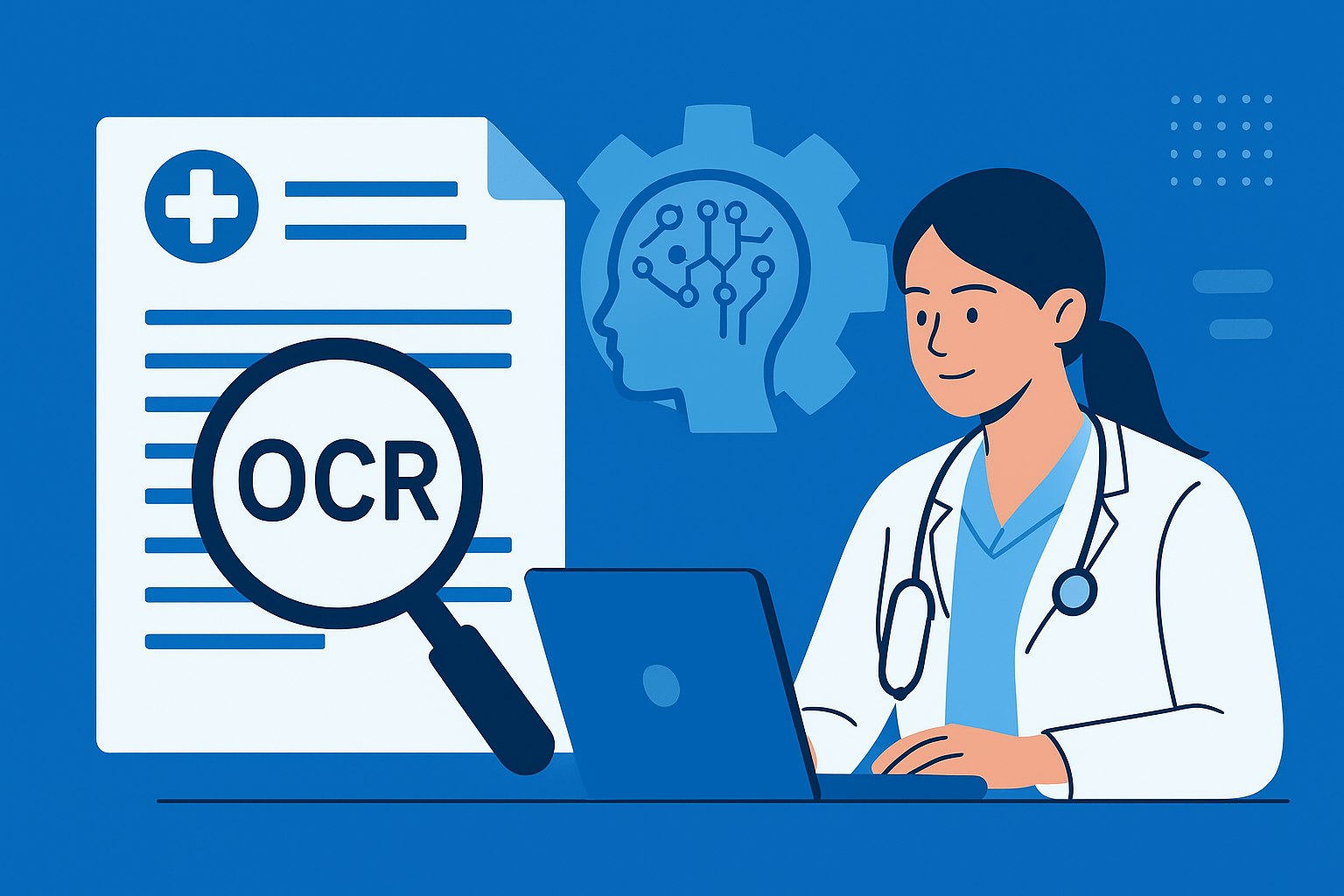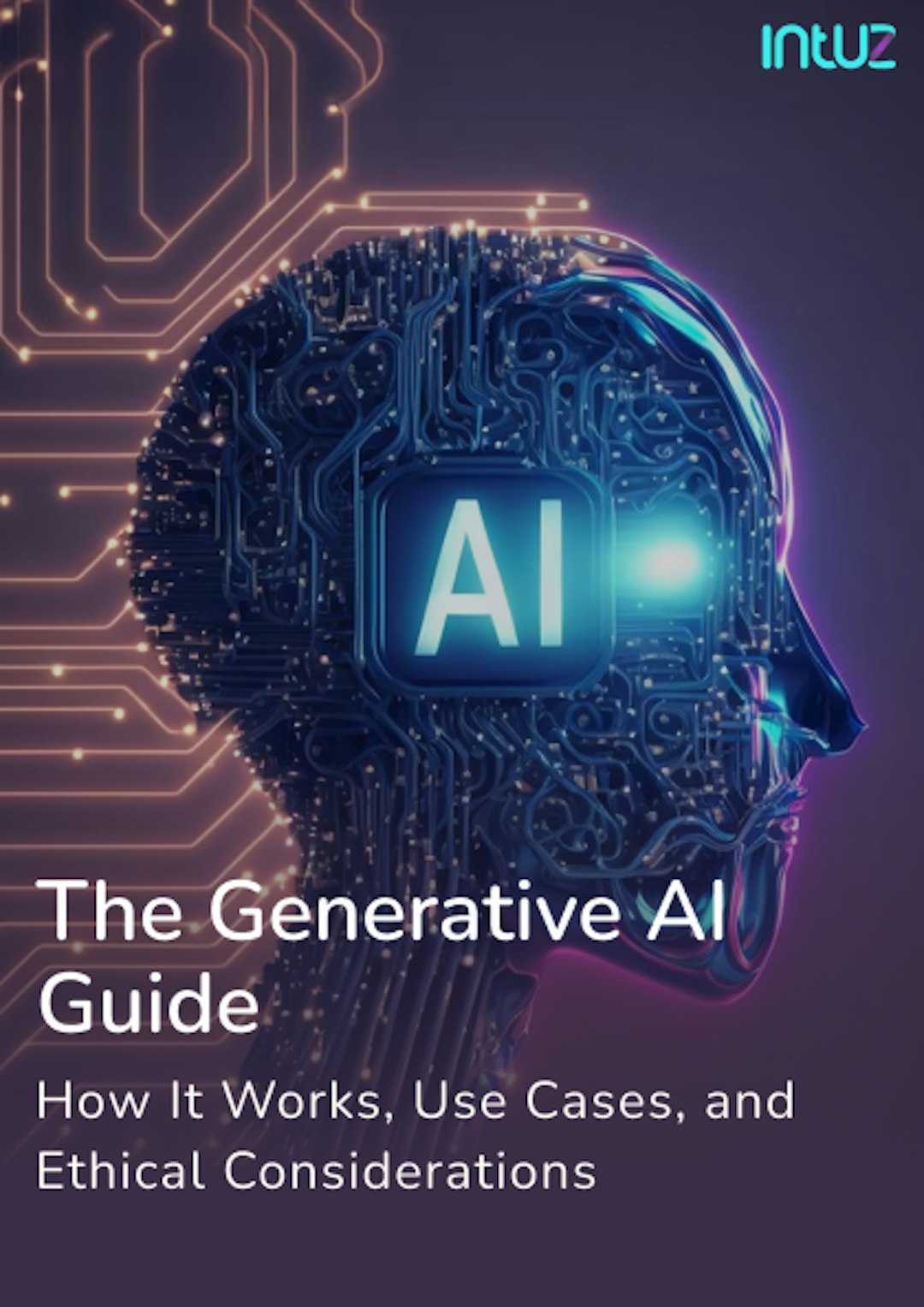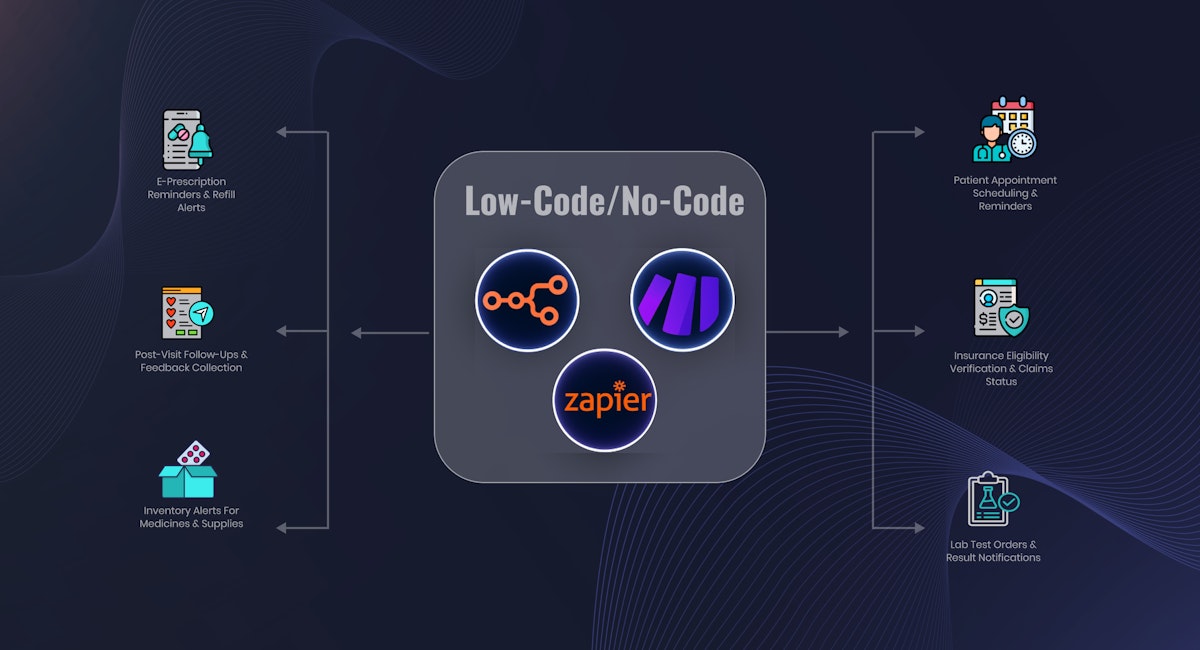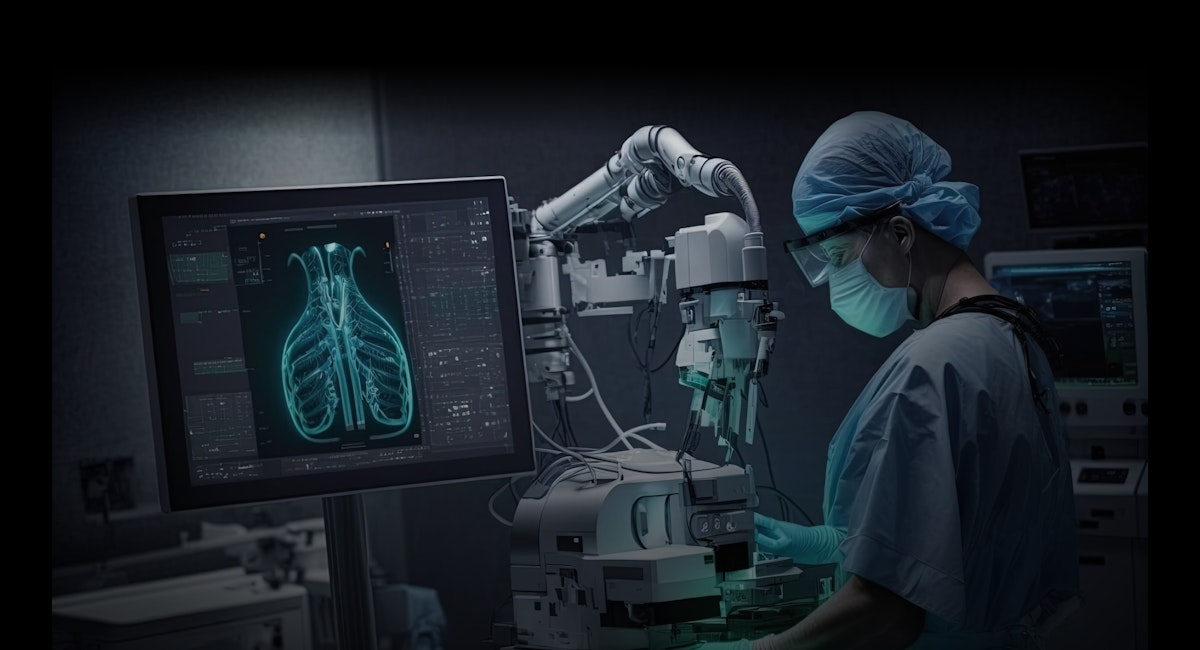Table of Content
Despite the increasing digitization of healthcare, paperwork remains a significant part of the system. Intake forms, lab results, and billing codes pile up in the guise of printed files and handwritten notes.
Your staff has to spend hours re-entering data into electronic health systems. Naturally, in such cases, human error is unavoidable, and compliance management becomes more challenging.
Additionally, the scale of the problem is larger than it appears—over 80% of digital data in healthcare is unstructured.
Sure, traditional OCR can be helpful. However, abbreviations, medical jargon, and especially handwriting make accurate capture difficult without contextual understanding in healthcare. That’s where AI-powered OCR closes the gaps.
In the following sections, we’ll explore how it works, the most critical use cases, and how you can start implementing it in your own systems (with Intuz’s help).
Key Takeaways
- AI-powered OCR handles mixed sources like intake forms, lab reports, prescriptions, and invoices, and maps them into EHRs, billing, pharmacy, and ERP systems
- Patient records can be digitized field by field with HL7 and FHIR mapping for demographics, encounters, results, diagnoses, and medications
- Billing accuracy improves when ICD-10, CPT, and modifiers are auto-extracted from CMS-1500 or UB-04 forms and validated against payer rules
- Prescription recognition works best with alias libraries and drug safety database integration for accurate drug names, dosages, and refill details
- Inventory management benefits from OCR by extracting batch numbers, expiry dates, and quantities from invoices and tagging items by risk level for expiry monitoring
- Implementation tips include document-type tagging, training on common codes, alias dictionaries, and expiry dashboards to boost accuracy and compliance
How AI-Powered OCR Works in Healthcare
Let’s say you’re dealing with volumes of paper files, PDFs, scans, and scribbled notes with you. With AI-powered OCR, the process starts by securely bringing those documents into the system, whether through a scanner, portal, or direct integration.
The OCR engine then identifies both printed and handwritten text, interpreting medical abbreviations and jargon using models on healthcare data.
Next, it extracts key fields, such as patient IDs, lab results, billing codes, and prescription details, mapping them to recognized medical standards.

The data is then validated against trusted databases, normalized for consistency, and formatted to meet requirements, like HL7 and FHIR.
Finally, the information flows directly into your existing platforms, including EHRs, revenue cycle management software, hospital information systems, and pharmacy tools.
Top 4 AI-powered OCR Solutions
1. Digitize paper-based patient records
When you think about a patient file, it’s really a mix of different document types: intake forms, discharge summaries, lab reports, physician notes, and prescriptions. Each holds details that your staff later needs to re-enter into the EHR. That’s where the delays and errors creep in.
With AI-powered OCR, every element in that file is scanned once, recognized, and mapped directly into the right place in your system. Here’s how that looks in practice:
| Record Element | Source (Paper/Scan) | Extracted by OCR | Destination (EHR/Database) | Format Standard |
|---|---|---|---|---|
| Patient ID | Intake form | ✅ | EHR demographics | HL7 ADT |
| Visit Date | Discharge summary | ✅ | EHR encounter | HL7 FHIR Encounter |
| Lab Results | Lab report (scanned) | ✅ | Results section | HL7 ORU |
| Diagnosis Codes | Physician notes | ✅ | Problem list | ICD-10 |
| Prescriptions | Handwritten notes | ✅ | Medication orders | RxNorm / HL7 RDE |
Intuz Recommends
When building OCR workflows, also include a step where staff tag files by document type (for example: “lab report” vs. “prescription”) before ingestion. This small action enhances OCR accuracy and facilitates smoother integration with HL7/FHIR.
Also Read: Healthcare Workflows to Automate Using Low-Code/No-Code Tools
2. Automate medical billing and insurance claims
Your billing staff spends too much time correcting errors that occur during manual data entry. A mistyped ICD-10 code, a missing CPT code, or a form that doesn’t line up with a payer’s requirements can all lead to rejections and delayed reimbursements.
AI-powered OCR helps by capturing data directly from billing forms, such as the CMS-1500 or UB-04. Instead of your staff retyping every field, the system reads the scanned form, extracts codes, and checks them against payer rules before the claim is ever submitted.
Here’s what that looks like in action:
| Claim Form Field | Typical Error in Manual Entry | OCR Capture Example | Recommended Format |
|---|---|---|---|
| Patient ID | Typo / transposed digits | Auto-extracted from CMS-1500 | Alphanumeric (10-12) |
| ICD-10 Diagnosis Codes | Wrong code version / missing digit | “E11.9” → validated | ICD-10 (7 chars max) |
| CPT Procedure Codes | Confusion with HCPCS | “99213” → verified | CPT-4 |
| Modifier Codes | Omitted | “25” appended | CPT Modifiers |
| Payer Rules Validation | Ignored until claim rejection | Auto-check before submission | ANSI X12N (837) |
Intuz Recommends
- We recommend training your OCR models on the 50 most commonly used ICD-10 and CPT codes by your billing staff. This ensures that your submissions are ready for immediate processing.
- For example, ICD-10 codes like E11.9 (Type 2 diabetes without complications) or I10 (Essential hypertension), and CPT codes like 99213 (Office/outpatient visit, established patient) or 93000 (Electrocardiogram, routine ECG).
3. Recognize handwritten prescriptions accurately
Handwritten prescriptions are one of the most common sources of delays in pharmacies.
Rushed handwriting can make a drug name appear as two different options, and unclear dosage instructions often require pharmacists to double-check charts or contact the prescriber for clarification.
AI-powered OCR takes the prescription scan and matches what it sees against trusted drug databases, such as RxNorm and FDA references.
Instead of relying on a pharmacist to decipher every word, the system interprets handwriting, validates drug names, and automatically flags risky combinations.
Here are the main considerations when applying OCR to prescriptions:
| Aspect | Pros | Cons |
|---|---|---|
| Handwritten Drug Names | Captured automatically with AI OCR | Accuracy depends on clarity and training data |
| Dosage Instructions | Structured and cross-validated with RxNorm | Complex shorthand may still need manual review |
| Drug Safety Alerts | OCR flags risky interactions or overdoses | Requires integration with drug databases |
| Pharmacy Integration | Direct feed into e-prescribing systems | Initial setup and validation can be time-intensive |
Intuz Recommends
We suggest you maintain a drug name alias library in your OCR system. For example, “Metformin” may appear as “Metf,” “Mtf,” or “Metformn” in messy handwriting. When configuring prescription recognition tools, you only need to preload these variations so the model doesn’t get confused.
Also Read: A Complete Guide to Generative AI in Healthcare
4. Streamline medical inventory management
Managing medical supplies takes time and focus. Deliveries often arrive with paper invoices or labels that include handwritten notes.
Your staff then manually key in batch numbers, expiry dates, and quantities. It’s repetitive work, and small mistakes can result in expired stock remaining on the shelf or critical medications running out unexpectedly.
AI-powered OCR helps by reading invoices, labels, and packing slips the moment they’re scanned. Batch numbers, expiry dates, and quantities are automatically captured and pushed directly into your inventory or ERP system.
That way, your staff spends less time typing and more time monitoring what really matters.
Intuz Recommends
Configure OCR to auto-tag inventory by risk level. For example, antibiotics with a 6-month shelf life can be tagged “high-risk expiry,” while saline bags with a 3-year shelf life get a “low-risk” tag. In inventory projects, this tagging makes it easy to generate expiry dashboards and prevent losses.
Best AI-Powered OCR Tools for Healthcare Companies: Expert Comparison by Intuz
| Vendor | Key Features | Integration | Best For |
|---|---|---|---|
| ABBYY (FlexiCapture / Intelligent Automation) | Templates for medical forms; chart and intake form conversion; invoices | EHR/RCM connectors; HL7/FHIR (custom); cloud or on-prem | Large hospitals needing high accuracy and flexibility |
| UiPath Document Understanding | Form and document extraction; human-in-loop review; claims/document workflows | Integrated in RPA flows to EHR/claims; hybrid or cloud | Teams needing OCR and automation at scale |
| Amazon Textract | Extracts printed text, forms, tables, handwriting; supports claims and chart processing | Pipelines to FHIR resources; HIPAA eligible; fully managed cloud | Orgs needing scalable, extensible extraction |
| Microsoft Azure Document Intelligence | Custom/form models; handwriting and key-value extraction; enterprise security | SDKs/connectors for mapping; supports standard formats; Azure cloud | Healthcare orgs in Microsoft ecosystem seeking customization |
| Kofax (Capture / Express / TotalAgility) | Batch document capture; scan processing; CMS-1500 and other medical form templates | Validation rules; integrates with claims/RPA; on-prem, cloud, or hybrid | Payers, clinics, orgs processing standardized forms at scale |
Case Study: How Generative AI and RAG Accelerated Pharma Research
The client’s R&D teams were overwhelmed by millions of new research papers each year, making it nearly impossible to extract relevant insights quickly. Manual reviews of dense clinical studies consumed weeks, delaying drug discovery and draining budgets.
We built a custom Generative AI solution with RAG that scanned and contextualized medical research, enabling scientists to ask precise questions and receive evidence-backed answers instantly.
Outcomes:
- Cut research cycle time by over 70%
- Reduced operational costs tied to manual review
- Enabled faster progression of promising compounds into trials
How Intuz Can Help Implement AI-Powered OCR in Your Healthcare System
Look, incorporating AI-powered OCR in your processes isn’t as simple as merely picking a tool off the shelf. You need a roadmap that respects compliance, integrates seamlessly with existing systems, and delivers results early. That’s the role we take at Intuz.
First, we align outcomes that matter to you, whether that means digitizing a backlog of patient charts, reducing claim rejections, or directly connecting OCR outputs with Epic or Cerner. That way, you know the exact investment upfront and can hold us accountable for results.
Every pipeline we design runs inside your secure cloud environment. Patient data remains under your control, and your IAM and SSO policies govern access to it. Compliance with HIPAA, GDPR, and regional data rules is maintained by default.
We also map workflows to HL7 and FHIR standards, ensuring seamless integration with your EHR, RCM, or HIS. We rely on open, proven frameworks whenever possible. You inherit AI solutions that are well-documented and widely supported.
Throughout the process, our India-based team overlaps with your workday for live stand-ups and decision-making, while asynchronous updates maintain momentum after hours. Finally, our pricing model is flexible.
You can start with a pilot for one workflow and expand into billing or inventory when ready. If priorities shift, you can pause without penalties. Easy! To learn more, schedule a complimentary consultation call with Intuz today.
About the Author
Kamal Rupareliya
Co-Founder
Based out of USA, Kamal has 20+ years of experience in the software development industry with a strong track record in product development consulting for Fortune 500 Enterprise clients and Startups in the field of AI, IoT, Web & Mobile Apps, Cloud and more. Kamal overseas the product conceptualization, roadmap and overall strategy based on his experience in USA and Indian market.







